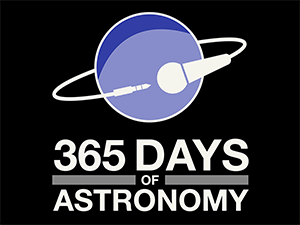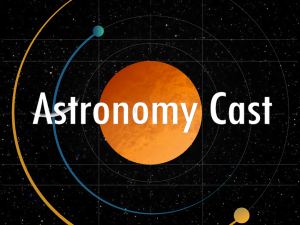
We don’t often have breaking news on this show, but after we’d set our show run for today’s episode, a story came out that made us drop everything, and make it our lead story. The story? The Transiting Exoplanet Survey Satellite, or TESS, has found a single star system with six stars, arranged in pairs, that, like dancers on a dance floor, all appear to circle in the same plane on the sky. Now, that may not sound that exciting initially, but the amount of things that have to go just right to get a system like this is pretty amazing.
In a single telescopic image, all six of these stars appear as a single point of light that over time varies in brightness. That single point is cataloged as TIC 168789840. That single point, however, changes in brightness over time in a way that isn’t normal for a single star. This unusual pattern of dips was discovered by software designed to look for eclipsing binary stars in sets of images from TESS.
Eclipsing binaries are pairs of stars that are oriented just right in the sky so that the stars pass in front of and behind one another as seen from our perspective here on Earth. Stars can and do form in every possible orientation so that as we look across the night sky we see stars that eclipse, stars that spiral around each other, and everything in between.

In a completely random universe, only one in every several dozen binaries will be seen to eclipse, with the light we’re seeing getting fainter whenever we can see one of the stars hiding behind another. And this system… In this system, there are three pairs of stars that are precisely lined up to eclipse each other.
This isn’t the first six-star system we’ve discovered. If you’ve ever gone out and looked at the constellation Gemini and its bright star Castor, you’ve looked at a six-star system masquerading as a single star. This is, however, the first totally eclipsing system we’ve found, and part of what makes this so awesome is that this flat system hints at a star formation history that had all these stars forming out of a massive, flat, and spinning cloud of gas that broke into each of these stars rather than forming a single massive one. These aren’t large stars; they range from about half the size of our Sun to about 30% bigger than our Sun.
These pairs are arranged with two of the systems in a fairly tight orbit, and the third pair significantly farther away. It’s unlikely that planets capable of supporting life could orbit any of those four stars in the tight pair, but it might be possible to find habitable worlds associated with that third, farther out system — might. The data hasn’t shown any evidence so far, but this system is in need of a good science fiction writer or artist to image the skies and mythology of this kind of complex system.
More Information
SETI Institute press release
NASA Goddard press release
“TIC 168789840: A Sextuply-Eclipsing Sextuple Star System,” Brian P. Powell et al., to be published in The Astronomical Journal (preprint on arxiv.org)



